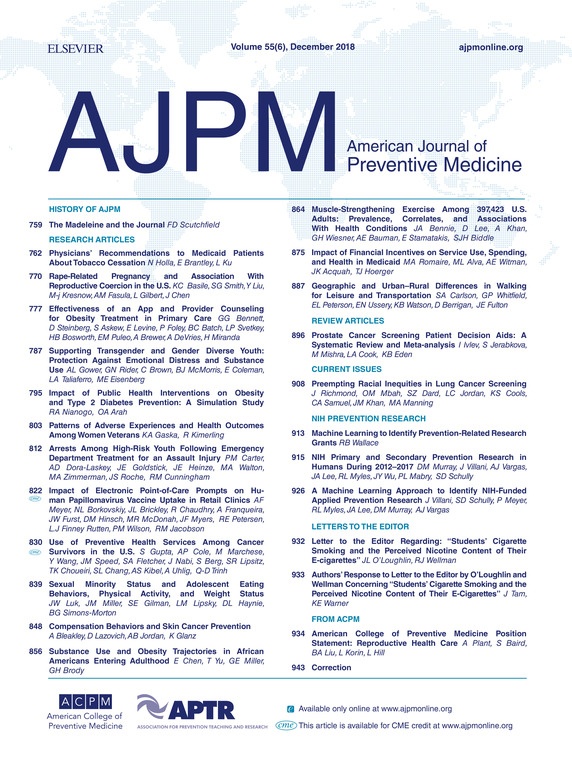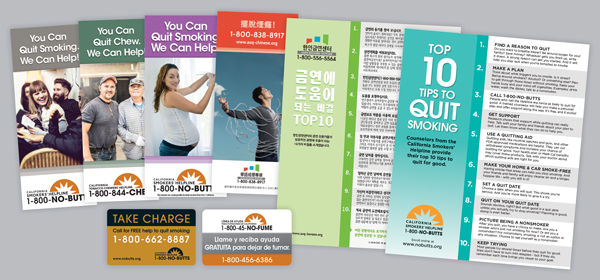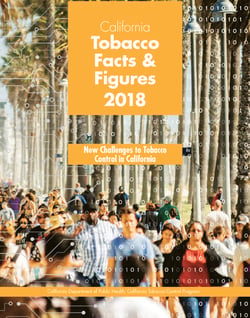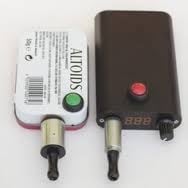Media contact:
Jillian B. Morgan, MPH, Managing Editor
AJPM
+1 734 936 1590
ajpmmedia@elsevier.com
 Ann Arbor, November 16, 2018 –
Ann Arbor, November 16, 2018 – New research shows improved smoking cessation outcomes can be achieved within the Medi-Cal (California’s Medicaid program) population by supplementing telephone counseling with access to nicotine-replacement patches and moderate financial incentives that are not contingent on outcomes. The group that received these additional services was more likely to make a quit attempt and remain smoke-free, both short- and long-term. This study also adds to the evidence that modest financial incentives can be an effective smoking cessation intervention for a low-income population.
This research was published in a special supplement to the American Journal of Preventive Medicine, guest edited by Steven A. Schroeder, MD, Department of Medicine, Smoking Cessation Leadership Center, University of California, San Francisco, CA, USA, which describes components of California’s Medi-Cal Incentives to Quit Smoking (MIQS) Project, its successes, and ongoing initiatives.
Key points:
- The MIQS Project produced impressive increases in motivating low-income smokers to call and enroll in quitline services and modest, but significant increases in quit attempts and successful quits.
- There was a 70 percent increase in calls to the quitline by Medi-Cal smokers, achieving a quitline reach of 4.5 percent, which exceeds the national quitline reach of 1 percent.
- Smokers assigned to the nicotine patch plus financial incentive group were more likely to make a quit attempt than the usual care (counseling-only group) and more likely to report six-month prolonged abstinence.
- The MIQS Project also demonstrated that offering nicotine patches plus a financial incentive to Medi-Cal smokers who call the quitline is cost-saving.
In a study of statewide outreach for the MIQS Project, led by Elisa K. Tong, MD, of the Department of Internal Medicine, University of California, Davis, Sacramento, CA, USA, promotion through health care channels increased the utilization and reach of quitline services to maximum levels. “Healthcare channels were an important referral source, as more Medi-Cal callers than non-Medi-Cal callers cited providers and plans rather than media,” Dr. Tong observed. “MIQS may be sustained with coordination and prioritization across plans, providers, and public health partners.”
Researchers conducted a randomized controlled trial to assess which approach was most helpful in getting Medicaid smokers to quit. They randomly assigned participants to one of three groups: usual care, consisting of smoker quitline counseling and assistance in obtaining quitting aids through Medicaid; usual care plus nicotine patches mailed directly to participants’ homes, and usual care plus mailed patches and financial incentives of up to $60 per person. Compared to usual care, people offered nicotine patches and financial incentives were more likely to:
- Make a quit attempt (68.4 percent vs. 54.3 percent)
- Be abstinent for 30 days at 2 months (30.0 percent vs.18.9 percent)
- Six-month prolonged abstinent at 7 months (13.2 percent vs. 9.0 percent)
Medicaid expanded eligibility under the 2010 Affordable Care Act, increasing the population of smokers on Medi-Cal. An analysis of datasets from the California Health Interview Survey led by Shu-Hong Zhu, PhD, of the Department of Family Medicine and Public Health, University of California, San Diego, CA, USA, showed that between 2012 and 2016, the number of smokers in California’s Medi-Cal program nearly doubled from 738,000 in 2011–2012 to 1,448,000 by 2016, raising the proportion of state smokers covered by Medi-Cal from 19.3 percent to 41.5 percent. Compared with smokers with private insurance, those in Medicaid were more likely to have chronic disease and experience severe psychological distress. In 2016, 51.4 percent of adult smokers with chronic disease conditions and 57.8 percent of those in severe psychological distress were covered by Medi-Cal.
“The growing concentration of smokers in Medicaid highlights the need for more effective approaches to reduce smoking in this population,” said Dr. Zhu. “I hope this study captures the attention not just of public health officials, but also of their counterparts in Medicaid. Reducing the toll of tobacco in this population should become an urgent priority for all Medicaid programs and plans.”
In a cost-benefit analysis that assesses the economic impact of supplementing usual care of quitline services with mailed nicotine patches and financial incentives of up to $60 per person, investigators found that compared to usual care alone, offering these adjunctive services to Medicaid callers will reduce future healthcare expenditures due to increased number of quitters. This will produce a net savings within five years with a benefit-cost ratio of 1.18. The net savings will accumulate over time with a benefit-cost ratio of 1.90 over 10 years.
“Our study demonstrates that investment in an effective smoking cessation intervention for Medicaid smokers can reap large savings down the road,” stated Hai-Yen Sung, PhD, of the Institute for Health & Aging, School of Nursing, University of California, San Francisco, CA, USA. “Providing modest financial incentives and mailed nicotine patches to Medicaid smokers who call the quitline is cost-saving. For every $1 invested in these adjunctive services to Medicaid callers, there will be $1.90 savings in healthcare costs within 10 years.”
This research is part of a five-year, $10 million grant awarded to the Department of Health Care Services (DHCS) by the Centers for Medicare & Medicaid Services (CMS) in 2011 and was part of an initiative exploring the use of incentives to change health behaviors in the Medicaid population. This research was designed to accelerate successful quitting by: increasing use of a well-established and effective phone counseling service, the California Smokers’ Helpline (CSH); decreasing barriers to obtaining nicotine replacement patches; and offering economic incentives to encourage quitting.
Led by the Department of Health Care Services, collaborators included the University of California San Diego (where the Helpline was developed and is currently housed); University of California Davis; University of California San Francisco; and the California Department of Public Health. This strategy was based on evidence showing that quitlines do improve the chances of quitting and that Medicaid smokers are motivated to quit, although their quit rates are somewhat lower than the general population.
“There is no single magic bullet to reduce the burden of smoking. The results of individual efforts, such as general or targeted mailings, free nicotine replacement therapy, referral to telephone quitlines, and financial incentives (all used in MIQS), as well as taxation, smoke-free legislation, and counter-marketing (all occurring in California as a backdrop to MIQS) may be relatively modest, but each contributes to driving down smoking rates. In the case of California, even a small percentage drop in smoking, when applied to almost 1.5 million Medicaid smokers, could save thousands of lives and millions of dollars,” concluded Dr. Schroeder.
.png?width=278&name=Boost%20your%20immunity.%20(2).png)













 The tobacco epidemic has evolved considerably since the first Surgeon General’s Report on Smoking and Health released back in 1964. As depicted by California Tobacco Facts and Figures 2018, the tobacco use problem has morphed from being all about cigarettes to a diverse group of tobacco product categories that includes cigarettes; chew and snus tobacco; cigarillos and little cigars; hookah; and a variety of electronic smoking devices. The latter category includes cig-a-likes, refillable tanks, and an explosion of devices that look like USB flash drives, lip-gloss, or pens. Coinciding with the diversification in electronic smoking devices is an exponential growth in flavored tobacco products; the number of flavors these products come in more than doubled from 2014 to over 15,500 flavors today. Flavored tobacco products are driving youth experimentation; more than 80 percent of youth who ever used a tobacco product reported that their first product was flavored.
The tobacco epidemic has evolved considerably since the first Surgeon General’s Report on Smoking and Health released back in 1964. As depicted by California Tobacco Facts and Figures 2018, the tobacco use problem has morphed from being all about cigarettes to a diverse group of tobacco product categories that includes cigarettes; chew and snus tobacco; cigarillos and little cigars; hookah; and a variety of electronic smoking devices. The latter category includes cig-a-likes, refillable tanks, and an explosion of devices that look like USB flash drives, lip-gloss, or pens. Coinciding with the diversification in electronic smoking devices is an exponential growth in flavored tobacco products; the number of flavors these products come in more than doubled from 2014 to over 15,500 flavors today. Flavored tobacco products are driving youth experimentation; more than 80 percent of youth who ever used a tobacco product reported that their first product was flavored.
 Date
Date
 San Bernardino, California (July 9, 2018) – To help smokers overcome nicotine addiction,
San Bernardino, California (July 9, 2018) – To help smokers overcome nicotine addiction, 
 Pregnant women and parents of young children are very important people with a big responsibility—keeping their children safe and healthy. The California Smokers’ Helpline offers free help to quit smoking to any resident of California, including
Pregnant women and parents of young children are very important people with a big responsibility—keeping their children safe and healthy. The California Smokers’ Helpline offers free help to quit smoking to any resident of California, including  Sharon Cummins, Ph.D. is an Assistant Professor in the Department of Family Medicine and Public Health at the University of California, San Diego. She has worked in tobacco control for over 20 years and is currently the Director of Research and Evaluation at the California Smokers’ Helpline and faculty for the Center for Tobacco Cessation, both operated through the UCSD Moores Cancer Center. Trained as a clinical psychologist, she maintained a clinical practice for 14 years.
Sharon Cummins, Ph.D. is an Assistant Professor in the Department of Family Medicine and Public Health at the University of California, San Diego. She has worked in tobacco control for over 20 years and is currently the Director of Research and Evaluation at the California Smokers’ Helpline and faculty for the Center for Tobacco Cessation, both operated through the UCSD Moores Cancer Center. Trained as a clinical psychologist, she maintained a clinical practice for 14 years.
